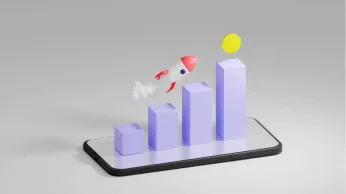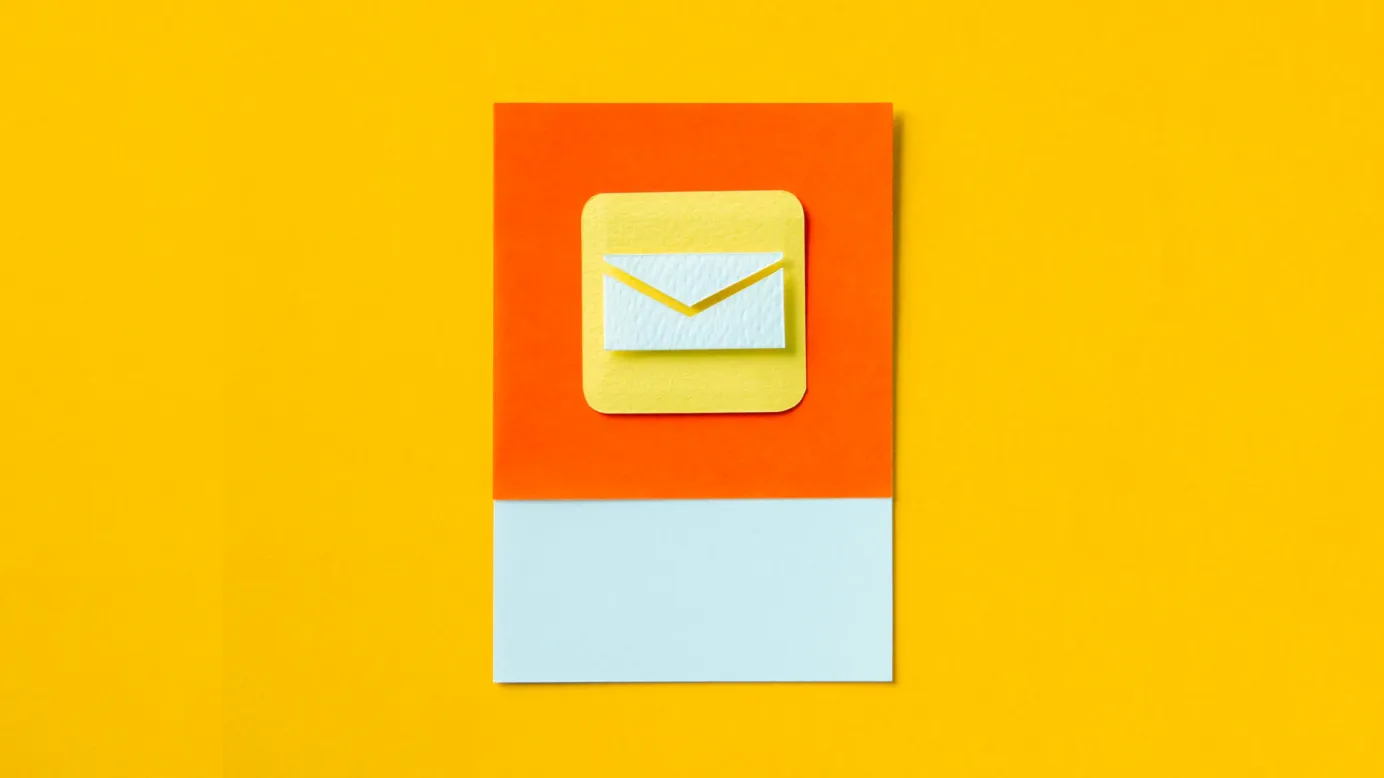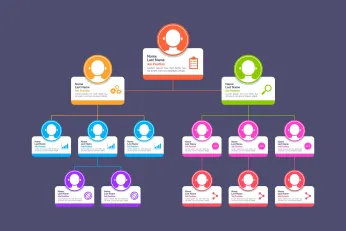The Ultimate Guide on How to Write Sales Email with 16 Templates for Better Response
Understand how to write a sales email that get better responses with our guide. Discover expert tips, techniques, and ready-to-use email templates to help you win more business and boost your sales performance.
On this page
In today's fast-paced business world, effective communication is key to success. When it comes to generating sales, email is one of the most powerful tools at your disposal. A well-written sales email can grab the attention of potential customers, build trust, and ultimately close deals.
But crafting a persuasive sales email that stands out in a crowded inbox is no easy task. In this blog, we'll share tips and best practices on how to write a sales email that captures your audience's attention, engages them, and ultimately drives sales.
Whether you're a seasoned sales professional or just starting out, you'll learn valuable strategies to help you craft compelling emails that get results.
Know your audience
When it comes to writing a sales email, knowing your audience is crucial. You need to understand who your target market is, what they're interested in, and what challenges they're facing.
Only then can you craft a message that speaks directly to their needs and persuades them to take action.
1. Understanding your target market
The first step in crafting an effective sales email is to understand your target market. This means identifying who your ideal customer is and what motivates them to buy.
Understanding their pain points, goals, and interests, you can tailor your message to resonate with them and show how your product or service can help solve their problems.
2. Researching your audience
Once you've identified your target market, you need to conduct research to learn more about them. This can involve analyzing demographic data, studying customer feedback, or conducting surveys and focus groups.
The more you know about your audience, the more effectively you can craft your message and tailor it to their needs.
3. Creating a buyer persona
One effective way to understand your target market is by creating a buyer persona. A buyer persona is a fictional representation of your ideal customer, based on demographic data, behavior patterns, motivations, and goals.
Creating a detailed buyer persona, you can visualize your target market and create a message that speaks directly to their needs and interests.
Key elements of effective sales emails
When crafting a sales email template, there are several key elements to keep in mind to ensure that the email is engaging, informative, and effective in driving sales. These elements include:
1. Subject line
The subject line is the first thing the recipient will see, and it can make or break whether or not they open the email. A strong subject line should be attention-grabbing, relevant to the recipient's needs, and convey a sense of urgency or value.
Some tips for crafting effective subject lines include:
- Keep it short and to the point (around 50 characters)
- Personalize the subject line with the recipient's name or company
- Use action-oriented language and include a clear benefit to the recipient
2. Opening sentence
The opening sentence of the email should build on the subject line and hook the recipient's attention. It should be personalized, relevant to the recipient's needs, and provide a clear reason for why the email is important.
- Use the recipient's name or company to personalize the email
- Highlight a common pain point or challenge that the recipient is facing
- Provide a clear value proposition or benefit to the recipient
3. Body copy
The body of the email should provide additional information on the product or service being offered, as well as highlight the benefits to the recipient. It should be concise, easy to read, and include a clear call-to-action.
- Focus on the recipient's needs and how the product or service can solve their problem
- Use bullet points to highlight key features and benefits
- Keep paragraphs short and to the point
- Provide social proof, such as testimonials or case studies, to build credibility
4. Call-to-action
The call-to-action (CTA) is the final step in the sales email template and should be clear and easy to understand. It should encourage the recipient to take action, such as visiting a website or scheduling a call.
- Use action-oriented language, such as "schedule a call" or "visit our website"
- Make the CTA stand out by using a different color or bold font
- Include a sense of urgency, such as a limited-time offer or deadline
5. Signature
The signature at the end of the email should include the sender's name, title, and contact information. It should be professional and easy to read.
- Use a professional email signature generator to create a consistent and polished signature
- Include relevant social media links or website links
- Use a professional headshot to add a personal touch
How to craft a compelling sales email subject line?
The subject line is the first thing your recipient sees when they receive your sales email. It's your chance to grab their attention and entice them to open your message. Crafting an effective subject line is crucial to the success of your email campaign.
1. The importance of a catchy subject line
Your subject line is the first impression you make on your potential customer. A well-crafted subject line can make the difference between your email being opened or ignored.
A catchy subject line can pique the recipient's interest and make them want to know more about what you're offering.
2. Tips for writing an effective subject line
Here are some tips for crafting a subject line that stands out:
- Keep it short and sweet: Your subject line should be short and to the point. Avoid using long, complicated sentences that are difficult to understand.
- Use action-oriented language: Use action-oriented language to make your subject line more compelling. Verbs like "discover," "learn," "get," and "find out" can create a sense of urgency and excitement.
- Personalize the subject line: Personalizing the subject line can make it more relevant and appealing to the recipient. Use their name or reference something you know about them to catch their attention.
- Create a sense of urgency: Use language that creates a sense of urgency, such as "limited time offer" or "act now."
3. Examples of successful subject lines
Here are some examples of effective subject lines:
- "Don't miss out on our exclusive offer!"
- "Get 50% off your first purchase today"
- "Discover how we can help your business grow"
- "5 ways to improve your productivity in 2022"
- "Last chance to register for our webinar"
Best practices for using sales emails
While having a well-crafted sales email template is important, it's equally important to use it effectively to maximize its impact. Here are some best practices to keep in mind:
1. Personalization
Personalization is key to making your sales email templates effective. Using the recipient's name and company is just the beginning. You should also tailor the content of the email to their specific needs and interests. This can include referencing their past interactions with your company or highlighting how your product or service can specifically address their pain points.
2. Segmentation
Segmenting your email list is important to ensure that your sales email templates are reaching the right people. You can segment your list based on factors such as job title, industry, and past interactions with your company. By sending targeted emails to specific segments, you can increase the relevance and effectiveness of your sales email templates.
3. Timing
Timing is important when it comes to sending sales email templates. You don't want to send too many emails and risk annoying your recipients, but you also don't want to send them too infrequently and risk losing their attention.
The best approach is to send emails at strategic times, such as when the recipient is most likely to be checking their email or when they're likely to be thinking about the problem your product or service can solve. Additionally, aligning your email outreach with a well-defined DMARC policy ensures a secure and authenticated communication channel, enhancing the effectiveness of your campaign.
4. A/B Testing
A/B testing is a great way to optimize your sales email templates. By testing different subject lines, opening sentences, and CTAs, you can determine what works best for your audience and refine your approach over time. Tracking key metrics like open rates, click-through rates, and drop-off rates will help you understand where recipients lose interest, allowing you to adjust your strategy accordingly.
Be sure to test one element at a time and track your results carefully to ensure that you're making data-driven decisions.
5. Follow-up
Following up is crucial to the success of your sales email templates. If a recipient doesn't respond to your initial email, it's important to follow up with a second or third email to keep the conversation going.
Be persistent but not pushy and be sure to provide value in each follow-up email to keep the recipient engaged.
Types of sales emails
Following are the 9 types of sales emails, and templates that you can use for your reference.
1. Cold email templates
Cold emails are emails that are sent to potential customers who have not previously engaged with your company. Cold email templates are designed to help salespeople make a strong first impression and encourage the recipient to take action. They should be personalized and relevant to the recipient's needs and interests. Some examples of cold email templates include:
- Introduction emails: These emails are used to introduce yourself and your company to the recipient. They should be brief, friendly, and highlight the benefits of your product or service.
- Referral emails: These emails are sent to potential customers who have been referred to you by a mutual connection. They should acknowledge the referral and provide additional information about your product or service.
- Follow-up emails: These emails are sent after an initial cold email to remind the recipient of your offer and encourage them to take action.
Template 1: Personalized Approach
Subject: Quick Question, [First Name]
Hi [First Name],
I came across [Company Name] and was impressed by [specific detail about their work]. I work with companies like yours to [solve a problem they might have]. Would you be open to a quick chat to see if we can help [Company Name] achieve [specific benefit]?
Let me know a time that works for you.
Best Wishes,
[Your Name]
[Your Company]
Template 2: Problem-Solution Approach
Subject: Struggling with [Problem]?
Hi [First Name],
I noticed that [Company Name] is [mention a challenge they might face]. Many companies in [industry] struggle with this, but we’ve helped [Client Name] achieve [specific result].
Would you be open to a 10-minute call to explore if we can do the same for you?
Looking forward to hearing your thoughts.
Best,
[Your Name]
2. Follow-up email templates
Follow-up emails are an important part of the sales process, as they help to keep the conversation going with potential customers who have shown interest in your product or service. Follow-up email templates should be timely, relevant, and provide value to the recipient. Some examples of follow-up email templates include:
- Thank you emails: These emails are sent to thank the recipient for their time and interest in your product or service. They should be personalized and highlight the benefits of your product or service.
- Reminder emails: These emails are sent to remind the recipient of a scheduled call or meeting. They should be brief and include all necessary details.
- Value-add emails: These emails are designed to provide the recipient with additional value, such as a helpful resource or article. They should be relevant to the recipient's needs and interests.
Subject: Following Up on My Last Email
Hi [First Name],
Just checking in to see if you had a chance to review my previous email. I’d love to discuss how we can help [Company Name] with [solution].
Let me know if you’re available for a quick chat this week.
Best,
[Your Name]
Template 2: Adding Value
Subject: [First Name], Thought This Might Interest You
I know you’re busy, so I wanted to share a quick resource that might be helpful: [link to a case study, blog post, or whitepaper].
If this resonates with you, I’d love to discuss how we can help [Company Name] achieve similar results. Let me know when a good time would be.
Best,
[Your Name]
3. Sales pitch email templates
Sales pitch emails are designed to convince potential customers to buy your product or service. These emails should be persuasive, informative, and highlight the benefits of your product or service. Some examples of sales pitch email templates include:
- Product or service announcement emails: These emails are used to introduce a new product or service to potential customers. They should highlight the benefits and features of the product or service and provide a clear call-to-action.
- Demo request emails: These emails are sent to potential customers who have shown interest in your product or service. They should provide information on how the demo will work and what the recipient can expect to learn.
- Case study emails: These emails are designed to showcase the success of previous customers who have used your product or service. They should be personalized and highlight the specific benefits and ROI that the customer received.
Subject: A Quick Way to [Benefit]
Hi [First Name],
I wanted to reach out because we’ve helped [Similar Company] increase [specific metric] by [percentage] in just [timeframe].
Would love to share how we can do the same for [Company Name]. Can we set up a quick call?
Best,
[Your Name]
Template 2: Storytelling Approach
Subject: How [Client Name] Achieved [Result]
Hi [First Name],
[Client Name] was facing [problem], just like many companies in [industry]. By working with us, they saw [specific result].
I’d love to explore how we can help you achieve similar success. When would be a good time to connect?
Best,
[Your Name]
4. Lead generation email templates
Lead generation emails are designed to capture the interest of potential customers and encourage them to take action. These emails should be personalized and relevant to the recipient's needs and interests. Some examples of lead generation email templates include:
- Content offer emails: These emails are designed to provide the recipient with valuable content, such as an eBook or whitepaper, in exchange for their contact information. They should be relevant to the recipient's needs and interests.
- Webinar invitation emails: These emails are used to invite potential customers to a live or recorded webinar. They should provide information on what the webinar will cover and what the recipient can expect to learn.
- Event invitation emails: These emails are used to invite potential customers to an event, such as a trade show or conference. They should provide information on the event and what the recipient can expect to gain from attending.
Subject: Free [Ebook/Webinar] on [Topic]
Hi [First Name],
I wanted to share a free [ebook/webinar] on [topic] that can help you [solve a problem].
You can access it here: [link]
Would love to hear your thoughts after you check it out!
Best,
[Your Name]
Template 2: Industry Insight
Subject: [Industry Trend] That Could Affect [Company Name]
Hi [First Name],
We’ve been tracking [industry trend] and noticed its impact on companies like yours. We put together a quick report that breaks it downthought you’d find it useful.
Would you like me to send it over?
Best,
[Your Name]
5. B2B email templates
B2C email templates are designed for businesses that sell products or services to consumers. These emails should be engaging, informative, and highlight the benefits of your product or service. Some examples of B2C email templates include:
- Promotional emails: These emails are used to promote a sale, discount, or special offer. They should be eye-catching and include a clear call-to-action.
- Abandoned cart emails: These emails are sent to potential customers who have abandoned their shopping cart on your website. They should provide an incentive to complete the purchase, such as a discount or free shipping.
- Welcome emails: These emails are sent to new customers to welcome them to your brand and provide additional information on your products or services.
Subject: Let’s Work Together
Hi [First Name],
I see that [Company Name] is doing great work in [industry]. We specialize in helping businesses like yours with [solution].
Would you be open to discussing potential collaboration?
Best,
[Your Name]
Template 2: Social Proof Approach
Subject: How We Helped [Client] Grow by [Result]
Hi [First Name],
We recently worked with [Client Name] and helped them achieve [specific success]. I believe we could do the same for [Company Name].
Would you be open to a quick conversation?
Best,
[Your Name]
6. Automated email templates
Automated email templates are designed to save time and improve efficiency by automating certain aspects of the sales process. They can be used for a variety of purposes, such as lead nurturing, onboarding, and follow-up. Some examples of automated email templates include:
- Drip campaign emails: These emails are sent over a period of time to nurture leads and encourage them to take action. They should be personalized and provide value to the recipient.
- Onboarding emails: These emails are sent to new customers to guide them through the process of getting started with your product or service. They should be informative and include all necessary information.
- Upsell/cross-sell emails: These emails are designed to encourage existing customers to purchase additional products or services. They should be personalized and highlight the specific benefits of the upsell or cross-sell.
Subject: Welcome to [Company Name]!
Hi [First Name],
Thanks for signing up for [Product/Service]! We’re excited to have you on board.
Here’s a quick guide to get started: [link]
If you have any questions, feel free to reply to this email.
Best,
[Your Name]
Template 2: Re-Engagement Email
Subject: We Miss You, [First Name]!
Hi [First Name], We noticed you haven’t been around for a while. Here’s what’s new at [Company Name]: [brief updates].
We’d love to have you back!
Here’s an exclusive offer for you: [offer link].
Best,
[Your Name]
Template 3: Abandoned Cart Reminder
Subject: You Left Something Behind!
Hi [First Name], We noticed you left some items in your cart.
Don’t miss out—complete your purchase today! [Complete My Order]
Need help? Let us know!
Best,
[Your Name]
Template 4: Subscription Renewal Reminder
Subject: Your Subscription is Expiring Soon!
Hi [First Name], Just a quick reminder that your subscription to [Product/Service] expires on [Date].
Renew now to continue enjoying uninterrupted service!
[Renew Now]
Best,
[Your Name]
7. B2C email templates
B2C email templates are designed for businesses that sell products or services to consumers. These emails should be engaging, informative, and highlight the benefits of your product or service. Some examples of B2C email templates include:
- Promotional emails: These emails are used to promote a sale, discount, or special offer. They should be eye-catching and include a clear call-to-action.
- Abandoned cart emails: These emails are sent to potential customers who have abandoned their shopping cart on your website. They should provide an incentive to complete the purchase, such as a discount or free shipping.
- Welcome emails: These emails are sent to new customers to welcome them to your brand and provide additional information on your products or services.
Subject: Special Offer Just for You!
Hi [First Name], We’re excited to offer you an exclusive [discount/promotion] on [Product/Service].
Claim your offer here: [link]
Hurry, this deal expires soon!
Best,
[Your Name]
Template 2: Customer Feedback Request
Subject: Tell Us What You Think!
We’d love to hear about your experience with [Product/Service]. Your feedback helps us improve!
Take a quick survey here: [link]
Thank you for being a valued customer!
Best,
[Your Name]
8. Other sales email templates
There are many other types of sales email templates that can be used for specific purposes. Some examples include:
- Re-engagement emails: These emails are sent to customers who have not engaged with your brand in a while. They should provide an incentive to re-engage, such as a discount or special offer.
- Survey emails: These emails are used to gather feedback from customers on your products or services. They should be brief and include a clear call-to-action.
- Testimonial request emails: These emails are sent to customers to request a testimonial or review of your product or service. They should be personalized and highlight the benefits of providing a testimonial.
Subject: Upgrade for Even More Benefits!
Hi [First Name],
We noticed you’re enjoying [Product/Service]. Did you know you can get even more benefits with [Upgrade/Plan]?
Check it out here: [link]
Let me know if you have any questions!
Best,
[Your Name]
Template 2: Referral Request
Subject: Love [Product/Service]? Share the Love!
Hi [First Name], If you’ve been enjoying [Product/Service], why not share it with your friends?
Refer a friend and both of you will get [discount/reward].
Start referring here: [link]
Thanks for your support!
Best,
[Your Name]
Conclusion
Writing a sales email is both an art and a science. It requires careful consideration of your audience, a clear understanding of your product or service, and the ability to craft a persuasive message that resonates with your target market.
Following the tips and best practices outlined in this blog, you can increase the effectiveness of your sales emails and ultimately drive more revenue for your business.
Remember to personalize your emails, keep them concise, focus on benefits over features, and include a clear call-to-action. With a little practice and attention to detail, you can become a master of the sales email and achieve your business goals.
FAQs
1. How do you start a sales pitch email?
To start a sales pitch email, begin by addressing the recipient by name and explaining the purpose of the email. Focus on the recipient's needs and pain points rather than your own. Use a personalized and conversational tone to increase engagement.
2. How to write a sales email sequence?
Writing a sales email sequence involves several steps:
- Choose an Objective: Determine the desired outcome, such as scheduling a consultation.
- Pick Email Software: Use tools like Outreach for automation.
- Write Personalized Emails: Each email should provide value and follow best practices like clear prose.
- Add Personalization Fields: Use fields for names and job titles to personalize content.
3. What is a sales style email?
A sales style email is a type of email designed to persuade recipients to engage with a product or service. It typically includes elements like personalization, a clear value proposition, social proof, and a compelling call to action. The goal is to build rapport and drive conversions by addressing the recipient's needs and pain points effectively.













